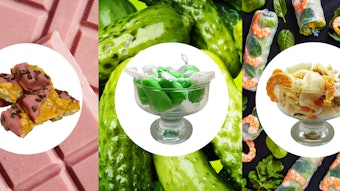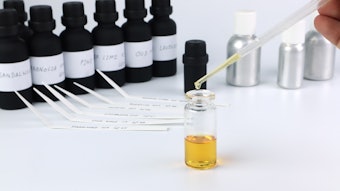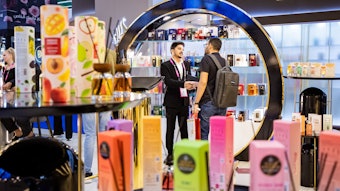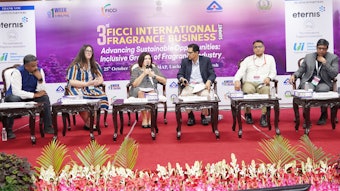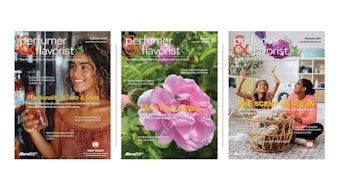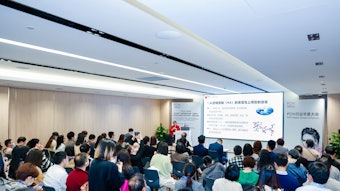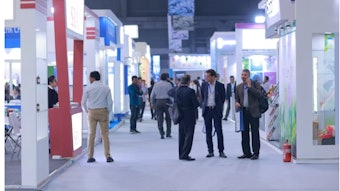This year’s symposium of the American Society of Perfumers provided an opportunity for a number of fragrance executives and consultants to speak out on a wide range of hot topics in the fragrance industry.
1. This is a Megatrend: Green Perfumery
“This is a megatrend,” said Yves Calderone (Limited Brands), when asked about the move towards naturals and organics in fragrance creation. “It offers [the industry] an incredible opportunity to think of ways to innovate in this area. Consumers clearly want it. It’s not just about fragrances. It’s about ethical sourcing, fair trade and a larger kind of green movement.
Calderone was careful, however, to say that companies cannot get too far out ahead of the consumer when it comes to “green.” “The consumer … is not willing to trade off in any way. They want [a product that] is doing good things for the environment, but will not trade off on aesthetics, performance or things like that … We’re going after the 95% of consumers that want to be 5% green, rather than the 5% that want to be 95% green.” In short, successful green scents must be mainstream products.
Panelists went on to note that natural and organic scents would largely be the domain of hand care products and the like, as opposed to fine fragrance, due to the limited palette of naturals. In addition, it was noted that green isn’t always "natural." In some cases, the use of synthetics avoids depletion of plant species, such as sandalwood. In addition, the changing environment can affect the supply stream of necessary natural raw materials.
2. Perfumers and Clients
Panelists also described how the relationship between clients and perfumers has evolved into a closer, more creation-focused partnership.
Ruth Sutcliffe (Coty) recounted how senior perfumers were once the ambassadors between the client and the fragrance house. “I get to see the perfumers much more often [now],” she said. “They get to go out. When it comes to fine-tuning a fragrance it’s a very important part of this process, being able to finish the fragrance at some point. They are the creative face of the company … they’re becoming stars.”
Trudi Loren (Estée Lauder) agreed: “All the perfumers are definitely stars. I think that perfumers have become true partners [in the creative process]. There was an ebb when perfumers became the salesmen in certain areas, but I think that has backed off a little bit so that they can really work on their fragrances.”
3. Finding Success and Art amid Consolidation and Excess Launches
P&G’s Scott Frame urged fragrance companies to focus on these questions:
- What are you really good at?
- What can you uniquely offer?
“Unique perfumers, unique creations, unique technology, unique market understanding—whatever it is, find out what you’re good at and maximize it,” he said. “Especially for small businesses. If they continue to try to be all things to all people they will [fail].”
Sutcliffe agreed. “Technology will continue and evolve ... We’ll see more and more new chemicals, new molecules—for instance the wood notes at the bottom of Dolce & Gabbana’s Light Blue, which I believe is one of the most innovative fragrances I’ve seen in a long time. It uses these really beautiful wood notes at the bottom that are the signature of that fragrance.”
Excess launches: Yet, despite innovations, the overwhelming number of fine fragrance launches continues to daunt and erode the industry. Doreen Bollhofer (Doreen A. Bollhofer Ltd.) worried, “I think it’s taking the preciousness out of the product. It has forced us to work harder and not smarter in trying to get product to market as fast as possible. It’s pulled away from the art to some degree.”
Loren, meanwhile, outlined the economics of the phenomenon. “It’s now coming down to how much money you’re putting behind your fragrance … The lifecycles are shorter. We’re having to do more for less.” Loren went on to say that it was going to have to be the consumer good side that would have to start to make a change for anything to happen. However, she noted, “the pressure for newness is outweighing the pressure for the classic that is going to stay on the market.”
At the same time, the accelerated launch schedule has collapsed development times. Calderone wondered how this was degrading creativity. “Personally, I don’t see how it’s possible to create incredibly lasting fragrances in six weeks … I see it as a major challenge.”
But Sutcliffe took a different view: “It is a challenge, but it’s doable.”
Research vs creative intuition: In such a high-pressure environment, what’s the relationship between artistic vision and market research? “On the back end,” said Calderone, “when it comes to quantitative data, I view that sort of as SAT scores—after a certain number it’s “good,” you’re going to be OK. I advocate more research up front and less attention paid on the back end.”
Loren said, “I don’t think we would look at [market test] results as being the be all, end all in supporting the [fragrance] candidate at the end, because for us the market is important as a litmus test, but if your gut or your intuition knows what the portfolio of that brand is, what needs to happen vis a vis the future of that specific brand or product, we’re going to weigh a certain amount of gut intuition, a little testing of the air, as well as looking at market research results. I think [market studies] are a good developmental tool for the fragrance houses; I don’t know if it will seal the deal in the end.”
Sutcliffe added, “If a fragrance house has a fragrance they believe in, and they have done in-house testing, that is very useful for us to support [that] fragrance. We always look at [testing], but it’s not a be all, end all.”
4. Effects of Regulations: Defending the Palette and Impact of Reformulations
When panelists focused on the question of regulations, most lamented the amount of time, manpower and resources that have been diverted to keep their heads above water. The passion was evident.
Frame took a strong stand on the fragrance industry’s response to recent regulatory inroads. “It limits the raw material palette, which is never a good thing,” he said. “I wish this industry would get more proactive and do something about it. Right now we’re letting other organizations and bodies get a lot of negative press, and there is almost [no one] talking about the benefits of fragrances and the delight it brings consumers. The best example I have is the plastics industry. Ten years ago—even five years ago—everyone was slamming that industry. [The plastics industry] put out proactive PR campaigns talking about the benefits of plastics in our society.” To Frame’s thinking, the plastics industry successfully communicated the benefits of plastic. “I think we need to get into a better balance,” he concluded. The audience clapped loudly.
“I personally know I have job security because of the reformulations we have to do on a regular basis,” said Loren. “But it’s taking our sights off the market, what we need to put out on the market as new and creative. We, as an industry, need to be on the offensive and not always on the defensive with what we’re doing in regulatory and with allergens.”
“I don’t think that regulatory issues will ever go away,” said Sutcliffe. “Technology continues to challenge us. That will never stop. We just have to be ready to adjust to the changes in our business.”

